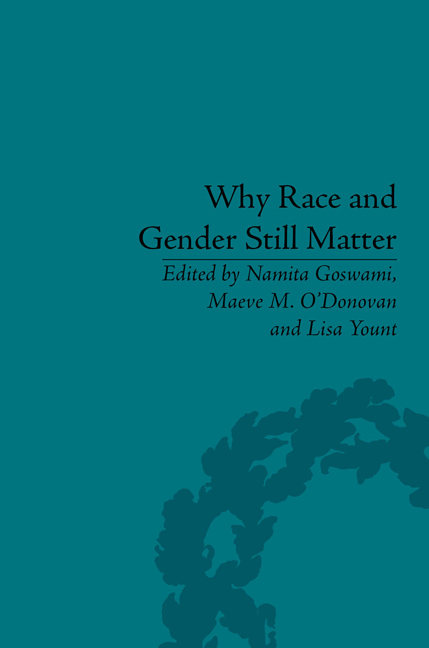Book contents
- Frontmatter
- CONTENTS
- Dedication
- Acknowledgements
- List of Contributors
- Introduction to Why Race and Gender Still Matter: An Intersectional Analysis
- Part I Defining Intersectionality
- 1 Race Women, Race Men and Early Expressions of Proto-Intersectionality, 1830s–1930s
- 2 Past as Prologue: Intersectional Analysis from the Nineteenth Century to the Twenty-First
- 3 Making Sense: The Multistability of Oppression and the Importance of Intersectionality
- 4 Reinvigorating Intersectionality as a Provisional Concept
- 5 ‘Big Red Sun Blues’: Intersectionality, Temporality and the Police Order of Identity Politics
- Part II Doing Intersectionality
- Notes
- Index
4 - Reinvigorating Intersectionality as a Provisional Concept
from Part I - Defining Intersectionality
- Frontmatter
- CONTENTS
- Dedication
- Acknowledgements
- List of Contributors
- Introduction to Why Race and Gender Still Matter: An Intersectional Analysis
- Part I Defining Intersectionality
- 1 Race Women, Race Men and Early Expressions of Proto-Intersectionality, 1830s–1930s
- 2 Past as Prologue: Intersectional Analysis from the Nineteenth Century to the Twenty-First
- 3 Making Sense: The Multistability of Oppression and the Importance of Intersectionality
- 4 Reinvigorating Intersectionality as a Provisional Concept
- 5 ‘Big Red Sun Blues’: Intersectionality, Temporality and the Police Order of Identity Politics
- Part II Doing Intersectionality
- Notes
- Index
Summary
People can only demand change in ways that reflect the logic of the institutions they are challenging. Demands for change that do not reflect … dominant ideology … will probably be ineffective.
How should we understand the concept of intersectionality given its ascendancy in women's, gender and sexuality studies as ‘the’ way to theorize the synthesis, co-constitution or interactivity of ‘race’ and ‘gender’? As it has travelled from margin to centre, ‘intersectionality’ appears to have become a cliché, a commonplace or ‘buzzword’ which garners widespread agreement that axes of oppression are not separable in our everyday experiences and therefore must be theorized together. In a progressivist narrative, intersectionality is celebrated as a methodological triumph over ‘previous’ essentialist and exclusionary approaches to theorizing identity and power relations; viewed as a research paradigm, it has even been characterized as the ‘most important contribution that women's studies has made so far’. It is hailed as the inclusionary political orientation par excellence for the millennial generation. In the quarter-century that has elapsed since the term ‘intersectionality’ was coined by Kimberlé Williams Crenshaw – the most widely cited ‘originator’ of intersectionality, whose work inherits a much longer history of black feminist thought traced to the nineteenth century – it seems feminist theory has very much ‘settled down’ with intersectionality.
- Type
- Chapter
- Information
- Why Race and Gender Still MatterAn Intersectional Approach, pp. 59 - 70Publisher: Pickering & ChattoFirst published in: 2014



